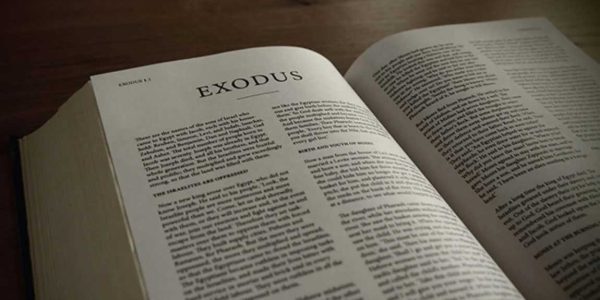The Book of Exodus – Deliverance, Covenant, and God's Presence
The Book of Exodus recounts God’s powerful deliverance of Israel from Egypt, the establishment of His covenant, and His presence among His people. It reveals God’s faithfulness, the giving of the Law, and His plan for redemption. The story that began with Israel in bondage ends with God in the midst of His people. From bricks without straw to garments of glory, from silence in Egypt to divine glory in the camp—Exodus is a story of God drawing near.
Introduction: God’s Redemption and Covenant Relationship
Historical & Biblical Context
Exodus is one of the foundational books of the Bible, detailing how God rescues His people from bondage and establishes a covenant with them. It is a book of miracles, divine instruction, and God’s desire to dwell among His people.
✔ God calls Moses to lead Israel out of Egyptian slavery.
✔ The Ten Plagues display God’s power over Egypt’s false gods.
✔ The Passover is instituted as a sign of deliverance.
✔ God parts the Red Sea, leading Israel to freedom.
✔ The Law is given at Mount Sinai, establishing the covenant.
✔ The Tabernacle is built, symbolizing God’s presence among His people.
🔹 Chapters 1-15: Israel’s oppression, Moses’ calling, the plagues, and the Exodus.
🔹 Chapters 16-24: Journey to Sinai and the giving of the Law.
🔹 Chapters 25-40: Instructions and construction of the Tabernacle.
Authorship & Structure
Author: Traditionally attributed to Moses.
Date Written: Estimated around 1446–1406 B.C. during Israel’s wilderness journey.
Audience: The Israelites, as they formed their national identity.
Key Themes: Deliverance, covenant, law, worship, and God’s faithfulness.
Structure:
🔹 Chapters 1-15: Israel’s oppression, Moses’ calling, the plagues, and the Exodus.
🔹 Chapters 16-24: Journey to Sinai and the giving of the Law.
🔹 Chapters 25-40: Instructions and construction of the Tabernacle.
Major Themes & Theological Significance
1️⃣ Deliverance & Redemption – God rescues Israel from slavery, foreshadowing Christ’s ultimate redemption of humanity.
2️⃣ God’s Covenant with Israel – The giving of the Ten Commandments establishes a holy relationship between God and His people.
3️⃣ God’s Presence – The pillar of cloud and fire, the Tabernacle, and Mount Sinai reveal God dwelling with His people.
4️⃣ Judgment on False Gods – The ten plagues systematically discredit Egypt’s gods, proving Yahweh’s sovereignty.
5️⃣ Faith and Obedience – Israel’s journey through the wilderness highlights the need for trust and faithfulness to God.
Prophetic Patterns
🔮 The Passover Lamb – Exodus 12 prefigures Jesus, the Lamb of God (John 1:29).
🔮 Moses as a Type of Christ – Moses delivers Israel from bondage, just as Jesus delivers believers from sin (Hebrews 3:3-6).
🔮 The Giving of the Law – The Law at Sinai points forward to Christ, who fulfills the Law and establishes the New Covenant (Matthew 5:17).
🔮 The Tabernacle as God’s Dwelling – The Tabernacle in Exodus foreshadows Jesus as God dwelling among us (John 1:14).
🔮 The Manna from Heaven – God’s provision of manna symbolizes Jesus, the Bread of Life (John 6:32-35).
Key Old Testament Prophecies Fulfilled in Exodus
⏳ Genesis 15:13-14 – Israel’s Slavery Foretold
🔹 Fulfilled in Exodus 1:8-14 when Israel is enslaved in Egypt.
⏳ Genesis 50:24-25 – Joseph’s Prophecy of Deliverance
🔹 Fulfilled in Exodus 13:19 as Israel carries Joseph’s bones out of Egypt.
⏳ Exodus 3:12 – Worship at Mount Sinai
🔹 Fulfilled in Exodus 19-20 when Israel receives the Ten Commandments.
⏳ Exodus 4:22-23 – Israel as God’s Firstborn
🔹 Foreshadowed in Matthew 2:15, linking Israel’s deliverance to Christ.
The Exodus as a Symbol of the Christian Walk
Israel’s journey out of Egypt is a powerful blueprint of the Christian life.
1️⃣ Bondage in Egypt = Bondage to Sin
🔹 Just as Israel was enslaved under Pharaoh, humanity is enslaved under sin and Satan (Romans 6:17).
🔹 Egypt represents the world and its false gods, where God’s people are oppressed.
2️⃣ The Blood of the Lamb = Justification by Faith
🔹 The Passover lamb’s blood delivered Israel from death (Exodus 12:13).
🔹 Christ, our Passover (1 Corinthians 5:7), redeems us from judgment.
🔹 This marks the moment of salvation—the blood applied.
3️⃣ Crossing the Red Sea = Baptism & Deliverance
🔹 Israel’s passage through the sea symbolizes baptism (1 Corinthians 10:1–2).
🔹 It’s the moment of leaving Egypt behind, permanently.
4️⃣ Wilderness Journey = Sanctification
🔹 In the wilderness, Israel learned trust, obedience, and dependence on God.
🔹 Like the believer, they battled doubt, compromise, and needed daily manna (the Word).
🔹 The journey was about preparing them for the Promised Land.
5️⃣ The Cloud & Fire = The Holy Spirit’s Leading
🔹 God visibly led them day and night—never leaving them (Exodus 13:21–22).
🔹 Believers today are led by the Holy Spirit, even in trials and delays.
6️⃣ The Promised Land = Eternal Life / Heaven
🔹 The goal wasn’t just escape from Egypt—but arrival in Canaan.
🔹 Our journey ends in the heavenly Promised Land (Hebrews 11:10).
Key Takeaways from Exodus
Exodus is a powerful testimony of God’s faithfulness, power, and presence.
📌 Are we trusting in God’s deliverance, even in difficult circumstances?
📌 Do we recognize Jesus as our Passover Lamb and Deliverer?
📌 Are we living in covenant obedience, following God’s commands from the heart?
🚀 Exodus is not just history—it is the story of God’s redemption, pointing us to Jesus Christ, the ultimate Deliverer!

Date Written
1446–1406 B.C.
Written By
Moses
Language
Hebrew
Chapters
40
